 Facebook
Facebook
 X
X
 Instagram
Instagram
 TikTok
TikTok
 Youtube
Youtube
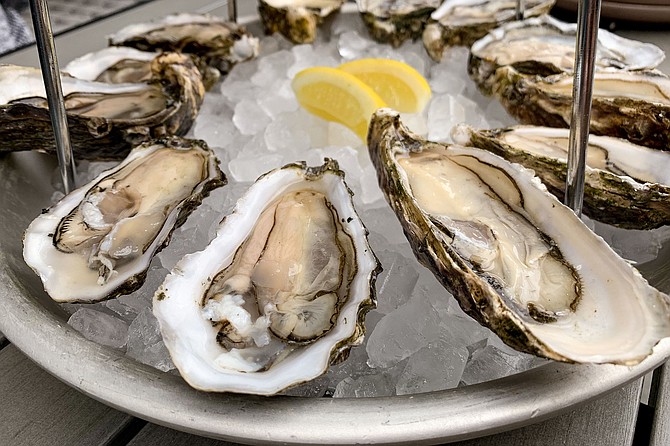
Since dining rooms reopened with a ban on re-usable menus, a few of our city’s savvier restaurants have replaced them with tech. Rather than disposable paper menu, they encourage use of blocky, square QR codes, placed on the corner of each table: when a smart phone camera sees the code, it links the device directly to a digital copy of the current menu.
We didn’t need to check look before we got our starting order in. This was Monday night, between the hours of 5 and 7 pm, meaning the $1 oyster happy hour was happening at the patio and bar of buzzy Mission Hills restaurant, Fort Oak.
I wasn’t sure I’d ever hear the words “oyster happy hour” again, so, with covid regulations changing constantly, I made a reservation at first opportunity. Besides, the buck a shuck special gave us a great excuse to visit the somewhat pricey restaurant. We could order drinks, fill up on oysters — slightly briny kumiais from Baja — then split an entree and small plate to round out a weeknight dinner date.
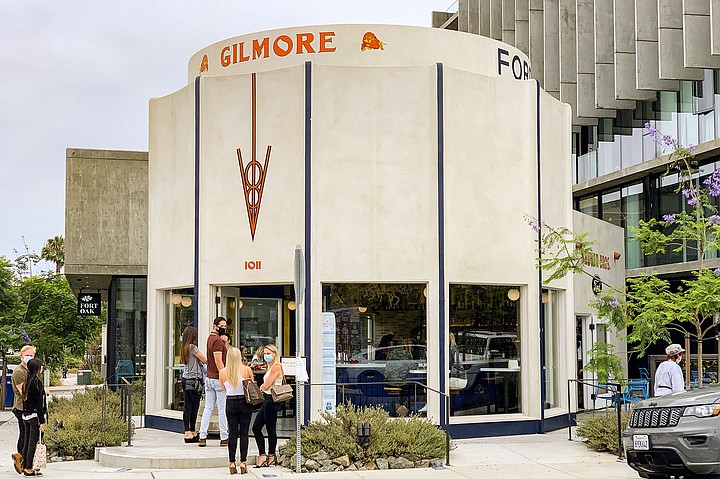
Fort Oak counts a wood fire kitchen among its charms, so we kept up the seafood theme by ordering a beautifully cooked and seasoned, hearth grilled branzino ($33). We also embraced the opportunity to try a new to us vegetable: caulilini. It’s a Chinese variety of cauliflower that resembles a washed out broccolini with white florets. The charred caulini ($16) with fermented chile aioli tasted like a slightly sweeter broccolini, quite a bit better than most other cauliflowers, in my opinion.
Fort Oak’s social distancing set-up was excellent, making use of its open dining room and wrap around patio. When the bill arrived, it also featured a QR code: one enabling online, contact free payment through your phone.
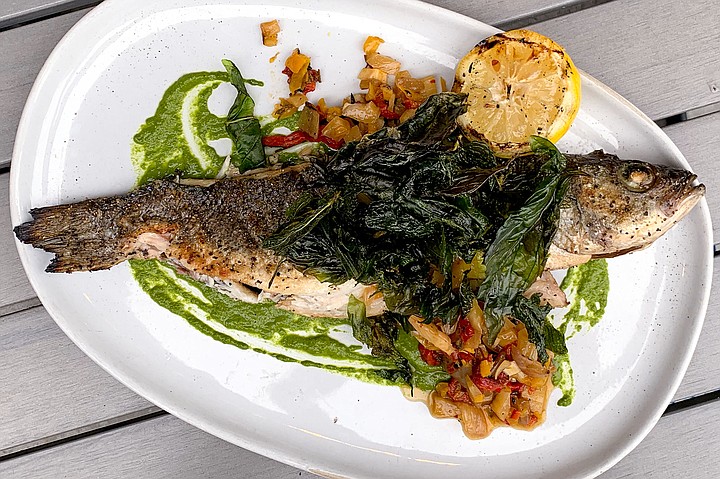
It’s only when the bill arrived that we noticed a four percent “living wage” charge included with our subtotal, “added to insure competitive compensation including medical benefits for our valued full time employees.”
The Trust Restaurant Group implemented this policy in January, choosing this method to combat rising costs, as opposed to the simpler option of raising the price of menu items.
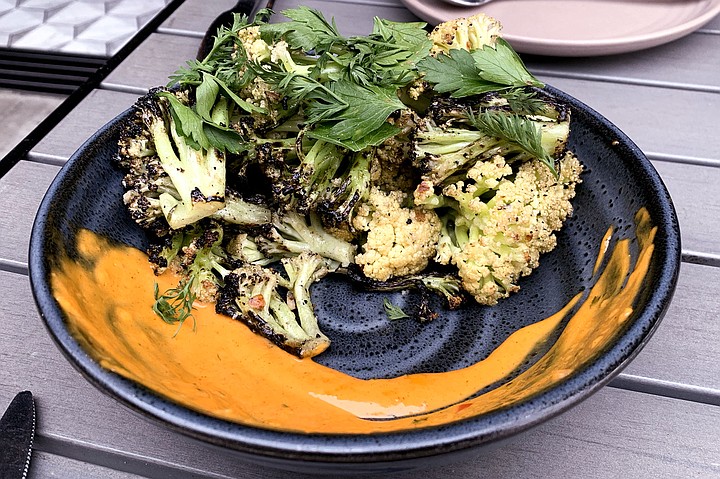
I’ve heard of restaurants adding such surcharges, usually to make a political point about the rising cost of doing business in California. Where the Trust group’s charge differs is that it’s optional.
The restaurant does add it by default, which means if you don’t want to pay, you have to be the jerk pointedly telling your server you have no interest in subsidizing his or her health benefits. Our server didn’t mention the charge up front, and judging by recent Yelp reviews of Trust restaurants, that’s not uncommon. Looking back over the menu, I can see a notice about the charge on the menu, in fine print at the bottom of the digital menu page, below the typical fish restaurant disclaimer about eating raw seafood.
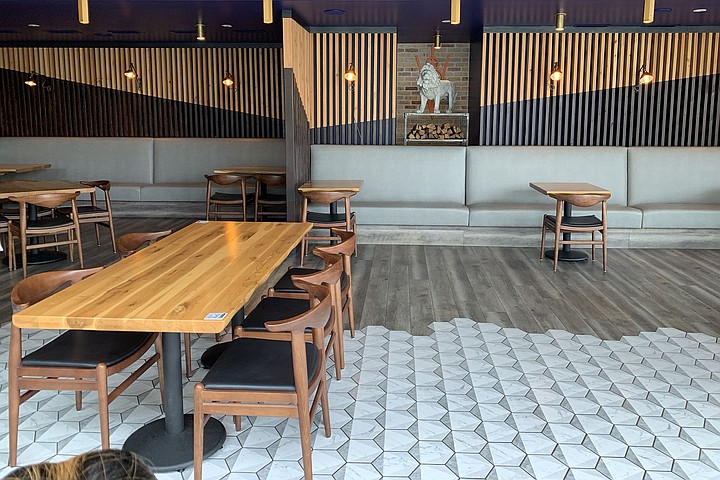
However, the point is, technically diners may opt out. I decided to opt in, because I support anyone who works a full-time job at least earning enough to pay San Diego prices for housing, sustenance, and necessities including self care. And I don’t want to be a hypocrite.

That said, I did deliberate whether 18 to 20 percent remained the tipping etiquette after an unexpected surcharge had been added to my tab? Bearing in mind the excellent dollar-per-oyster prices, I answered yes. But that decision will be, as they say, between every diner and his or her own god.


Since dining rooms reopened with a ban on re-usable menus, a few of our city’s savvier restaurants have replaced them with tech. Rather than disposable paper menu, they encourage use of blocky, square QR codes, placed on the corner of each table: when a smart phone camera sees the code, it links the device directly to a digital copy of the current menu.
We didn’t need to check look before we got our starting order in. This was Monday night, between the hours of 5 and 7 pm, meaning the $1 oyster happy hour was happening at the patio and bar of buzzy Mission Hills restaurant, Fort Oak.
I wasn’t sure I’d ever hear the words “oyster happy hour” again, so, with covid regulations changing constantly, I made a reservation at first opportunity. Besides, the buck a shuck special gave us a great excuse to visit the somewhat pricey restaurant. We could order drinks, fill up on oysters — slightly briny kumiais from Baja — then split an entree and small plate to round out a weeknight dinner date.

Fort Oak counts a wood fire kitchen among its charms, so we kept up the seafood theme by ordering a beautifully cooked and seasoned, hearth grilled branzino ($33). We also embraced the opportunity to try a new to us vegetable: caulilini. It’s a Chinese variety of cauliflower that resembles a washed out broccolini with white florets. The charred caulini ($16) with fermented chile aioli tasted like a slightly sweeter broccolini, quite a bit better than most other cauliflowers, in my opinion.
Fort Oak’s social distancing set-up was excellent, making use of its open dining room and wrap around patio. When the bill arrived, it also featured a QR code: one enabling online, contact free payment through your phone.

It’s only when the bill arrived that we noticed a four percent “living wage” charge included with our subtotal, “added to insure competitive compensation including medical benefits for our valued full time employees.”
The Trust Restaurant Group implemented this policy in January, choosing this method to combat rising costs, as opposed to the simpler option of raising the price of menu items.

I’ve heard of restaurants adding such surcharges, usually to make a political point about the rising cost of doing business in California. Where the Trust group’s charge differs is that it’s optional.
The restaurant does add it by default, which means if you don’t want to pay, you have to be the jerk pointedly telling your server you have no interest in subsidizing his or her health benefits. Our server didn’t mention the charge up front, and judging by recent Yelp reviews of Trust restaurants, that’s not uncommon. Looking back over the menu, I can see a notice about the charge on the menu, in fine print at the bottom of the digital menu page, below the typical fish restaurant disclaimer about eating raw seafood.

However, the point is, technically diners may opt out. I decided to opt in, because I support anyone who works a full-time job at least earning enough to pay San Diego prices for housing, sustenance, and necessities including self care. And I don’t want to be a hypocrite.

That said, I did deliberate whether 18 to 20 percent remained the tipping etiquette after an unexpected surcharge had been added to my tab? Bearing in mind the excellent dollar-per-oyster prices, I answered yes. But that decision will be, as they say, between every diner and his or her own god.
Comments